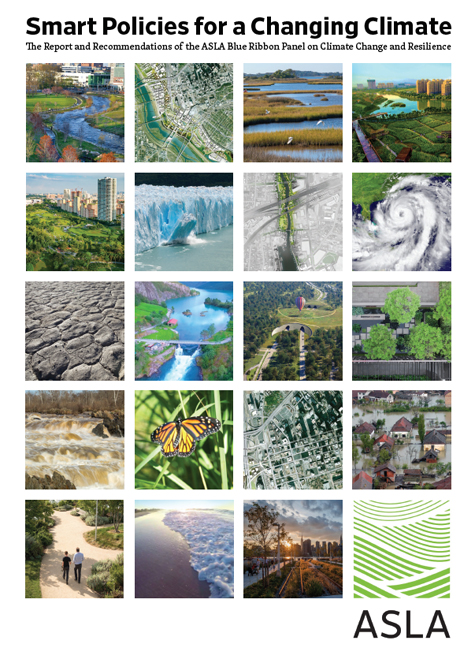Professional Practice
Climate Change Mitigation: Regions
Download Report:
Nearly half of global greenhouse gas (GHG) emissions are related to the landscape and built environment.
Regional sprawl is a big part of the problem. The average Atlanta-area resident produces more than ten times as many carbon dioxide emissions from transportation than the average resident of Barcelona, Spain, even though both cities have the same population. The difference is a result of the built environment: Barcelona takes up just 162 square kilometers (km2), less than 4 percent of Atlanta’s 4,280 km2. In all, America’s sprawling, car-centric suburbs are responsible for 50 percent of all U.S. GHG emissions. Sprawl is also more expensive than compact development, costing the US economy more than $1 trillion dollars every year.
For these reasons, reducing regional sprawl is key to reducing overall GHG emissions. According to the National Renewable Energy Laboratory, smart growth policies and increased use of public transit could help US cities reduce emissions by anywhere from 7-19 percent annually by 2035.
Landscape architects play a key role in achieving this goal. Landscape architects plan and design transit oriented development (TOD), which reduces sprawl and allows people to live a less car-dependent lifestyle. They create regional plans that promote walking, cycling, and the use of public transit. They design towns, parks, plazas, and streets with seamless, interconnected access to multiple low-carbon transit options. They create access to local transit, which connects to airports, bus, and rail stations, allowing residents to travel long distances without needing a car.
All of these efforts also enable communities to better adapt to the impacts of climate change already being felt. Low-carbon regions with lots of transportation options are by nature more resilient -- there are more ways to move if one mode fails in the event of a natural or man-made disaster.
Organizations
American Planning Association
American Public Transportation Association
Congress for New Urbanism
Smart Growth America
Resources
Fast Facts on Transportation Greenhouse Gas Emissions, U.S. Environmental Protection Agency
Public Transportation's Contribution to U.S. Greenhouse Gas Reduction, American Public Transportation Association, 2007
Smart Growth and Climate Change, U.S. Environmental Protection Agency
Transportation Design Guide, American Society of Landscape Architects
Research
Density, Carbon Emissions, Transportation and Energy Efficiency, Dana Flatow, University of Texas at Austin School of Architecture
Estimating the National Carbon Abatement Potential of City Policies: A Data-Driven Approach, Eric O'Shaughnessy, Jenny Heeter, David Keysery, Pieter Gagnon, and Alexandra Aznar, National Renewable Energy Laboratory
Getting to Minus 80: Defining the Contribution of Urban Form to Achieving Greenhouse Gas Emission Reduction Targets, The Design Center for Sustainability at The University of British Columbia, Vancouver, Canada
Suburban sprawl cancels carbon-footprint savings of dense urban cores, Robert Sanders, Berkeley News, January 6, 2014
Urban Density and Climate Change, David Dodman, United Nations Population Fund, April 2, 2009
Projects
Atlanta Beltline Redevelopment Plan, Atlanta, GA
EDAW, Inc.
The Fourth Regional Plan, New York, NY
RPA
Great Lakes Century Vision
Skidmore, Owings & Merrill LLP
Positioning Pullman, Chicago, IL
site
Regional Climate Action Plan
Southeast Florida Regional Climate Change Compact
Urban Corridor Planning, Houston, TX
The Planning Partnership Limited